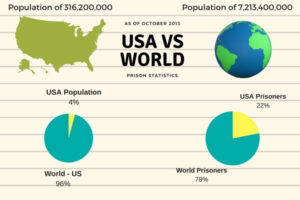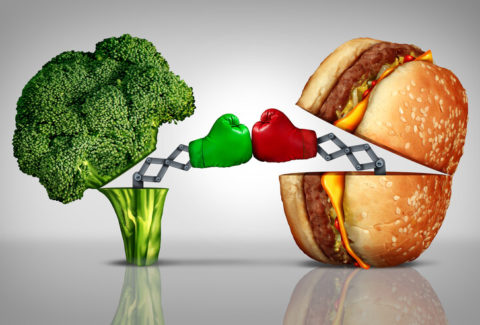Working with the African American Population: Our Role as Clinicians
“We are the product of the history that our ancestors chose, if we are white. If we are black, we are the product of the history that, our ancestors, most likely, did not choose … we have to understand that in order to escape from it.” This was the introductory paragraph from the moving and well-done documentary entitled 13TH, directed by Ava Duvernay.
Race, racism, discrimination, biases and microaggressions are the topics of some of the most difficult conversations that take place every day in our minds, but most of us attempt to avoid them at all costs; except that the cost is high for our patients and clients of color. They are already stigmatized for their mental health condition, their substance use disorder, and their HIV status, as well as their sexual orientation; they are already stigmatized for homelessness, their lower level of education, and unemployment status; they also bear the burden of a skin color that their ancestors have been told makes them “inferior.”
Our patients and clients, whose ego defenses are rarely strong enough, are also dealing with the added stress of racism, discrimination, and microaggressions. All these forms of trauma make it consistently unsafe for them and in turn it becomes rather impossible for them to heal and achieve full recovery. To promote healing and recovery from trauma, for the wellbeing our patients and clients, we as clinicians and advocates cannot afford to avoid the difficult conversations that surround race, racism, discrimination, biases and microaggression. These emotionally laden and difficult conversations first start with an understanding of the situation.
“Except as a punishment for a Crime”
There have been 27 ratified amendments to the constitution, and amendment 13 made slavery unconstitutional,
shortly after the Civil War. Nonetheless, as articulated in the documentary 13TH, the 13th amendment has a loophole. It’s a loophole that has been used to continue enslaving, dominating, and mistreating our brothers and sisters, making them believe that they are, in fact, “inferior.” “Except as a punishment for a crime” has been the loophole of the thirteen Amendment, leading to mass incarceration, re-systematizing Jim Crow, an explanation that Michelle Alexander eloquently articulated, in her book, entitled, The New Jim Crow.
When I supervise clinicians, a question about a system issue always comes up. As I refuse to provide the answer, which would discourage critical thinking, I make sure to facilitate the process of discovery, and I therefore wear my Socratic hat. However, once I perceive the need to give a nudge, doing gap filling, I remind them of the three places to look each time they need to understand how any decision is made—a requirement to understand how to best problem solve. I remind them that for any decision, there is the economical contributing factor, the political factor, and the policy aspect. This prompt will often get them back on track, in their problem-solving process. As for any decision, slavery was motivated by at least one of these factors, the most powerful one being economic.
The Unfortunate Power of the Media
 Outside of the US, the person of color living in the US is portrayed as lazy, dependent, living like a “parasite,” and waiting for the government—the white man—to provide for him or her. When someone then immigrates to the US and sees a disadvantaged man of color on the street, this image only reinforces this one-sided propaganda and belief displayed through media, outside of the US. This is, of course, until the immigrated individual starts to learn and experience the system of discrimination in the workplace, by the police, in the stores, and in the schools. It is only then that he or she will experience a “wake-up call,” and wonder and start to really look into the other side of the story.
Outside of the US, the person of color living in the US is portrayed as lazy, dependent, living like a “parasite,” and waiting for the government—the white man—to provide for him or her. When someone then immigrates to the US and sees a disadvantaged man of color on the street, this image only reinforces this one-sided propaganda and belief displayed through media, outside of the US. This is, of course, until the immigrated individual starts to learn and experience the system of discrimination in the workplace, by the police, in the stores, and in the schools. It is only then that he or she will experience a “wake-up call,” and wonder and start to really look into the other side of the story.
Our role as Clinicians
Examine Yourself: Whether you are white or someone of color, ask yourself: “How do I feel about working with a population of color? How do I view them? What do I really think about them? And, how do I view myself in comparison to them?”
Start the Conversation: Get out of your comfort zone and have the courage to start the conversation and ask your patient and client: “How do you see yourself as a person of color? How do you feel about me working with you (either as white or someone of color)? And, how do you feel about working with white clinicians or clinicians of color, in general?”
Keep the End in Mind: Talking about race can be anxiety provoking. We are afraid of saying the wrong thing; we are afraid of unintentionally offending. But we can strive to keep the end in mind, by starting with the why of the conversation, the process, and what we hope to accomplish at the end.
“We are the product of the history that our ancestors choose, if we are white. If we are black, we are the product of the history that, our ancestors, most likely, did not choose … we have to understand that in order to escape from it.” This was the introductory paragraph from the moving and well-done documentary, entitled, Thirteen, directed by Ava Duvernay.
How much do we understand?
Why have we been delaying the start of this conversation?
Are we ready to take the first step for the sake of our patients and clients, by at least trying to understand?
As President Barack Obama eloquently said, “The US has 5 percent of the world’s population but 25 percent of the world’s prisoners.” As clinicians working with this population, this data should make us all wonder.

References:
-
Congressional Research Service. (1992). The Constitution of the United States of America: Analysis and Interpretation. (Senate Document No. 103–6). (Johnny H. Killian and George A. Costello, Eds.). Washington, D.C.: U.S. Government Printing Office.
-
Boyd-Franklin, N. (2003). Black families in therapy: understanding the African American experience. New York, NY. The Guilford Press.
-
Constance-Huggins, M. (2012). Critical race theory in social work education: a framework for addressing racial disparities. Critical Social Work, 13(2), 1-16.
-
Knapp, M., Funk, M., Curran, C., Prince, M., Grigg, M., & McDaid, D. (2006). Economic barriers to better mental health practice and policy. Health Policy and Planning, 21(3), 157.
-
Sotero, M. M. (2006). A conceptual model of historical trauma: implications for public health practice and research. Journal of Health Disparities Research and Practice. Vol. 1(1), pp. 93-108.







